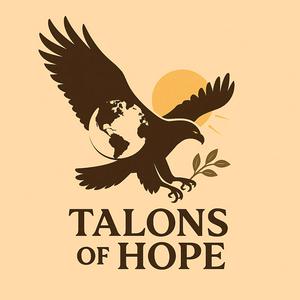Islands on the Edge: Saving the World’s Most Endangered Raptors
Send us a textAcross the world’s scattered islands, from the volcanic ridges of the Philippines to the icy fjords of Tierra del Fuego, live some of the rarest and most extraordinary birds of prey on Earth. These are the island raptors—hawks, owls, eagles, and falcons that evolved in isolation, mastering ecosystems shaped by wind, salt, and solitude. But that same isolation now places them in peril.Science tells a stark truth: every known extinction of a raptor has occurred on an island. From the Guadalupe Caracara of Mexico to the Reunion Kestrel and owl of the Indian Ocean, island raptors have vanished—quietly, and often unnoticed—undone by invasive species, habitat loss, pollution, and the accelerating impacts of climate change. Their populations are small, their habitats fragmented, and their options vanishing.In this episode of Talons of Hope, host Dr. Munir Virani sits down with Dr. Ulises Balza, a leading Argentinian raptor biologist whose groundbreaking research has revealed the global scale of this crisis. Drawing on his studies from the windswept archipelagos of Tierra del Fuego to the subantarctic islands, Ulises explains why island raptors are the world’s most imperiled birds of prey—and why now is the time to act.Together, they explore:How genetic isolation and small populations heighten extinction risk.The surprising ways some raptors depend on marine food webs, feeding on seabirds, seals, and even whales.The threat of heavy metal contamination and ecosystem collapse.And the bold idea to create a global Island Raptor Conservation Network, linking scientists, communities, and governments in a unified effort to save these birds before it’s too late.Yet this is not just a story of loss—it’s a story of hope. The Mauritius Kestrel, once down to only four known birds, was brought back from the brink through determination, science, and collaboration. Its recovery stands as proof that extinction is not inevitable.As Ulises reminds us, island raptors are more than symbols of fragility—they are sentinels of resilience, teachers of adaptation, and guardians of the planet’s most vulnerable ecosystems.This episode is a call to raise the red flag, to unite for action, and to believe—like the kestrel that flew again—that hope still has wings.


